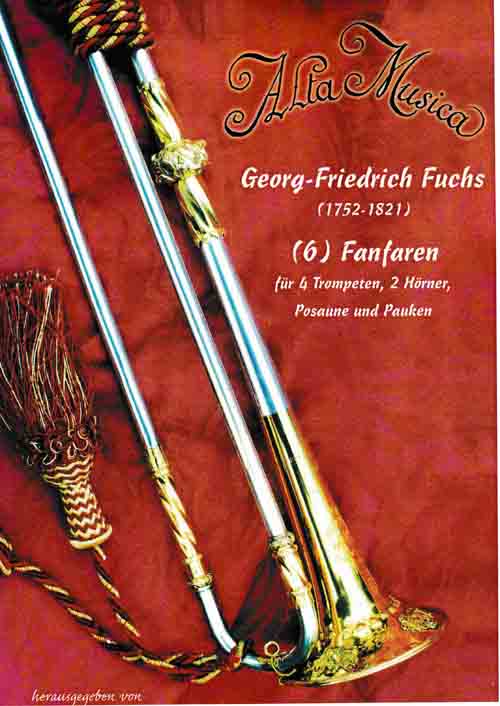
Georg-Friedrich Fuchs (1752-1821). Six Fanfares for 4 trumpets, 2 horns, trombone and timpani. Edited by Jean-Louis Couturier. Alta Musica Series SM 50221. Spaeth/Schmid Blechblasernoten, 2014. www.spaeth-schmid.de
Georg-Friedrich Fuchs was born in Mainz and displayed musical talent as a young boy and learned the clarinet, horn and bassoon. He received instruction under Joseph Haydn and went on to serve as a military musician in several German regiments. In 1784 Fuchs moved to Paris where he gained a fair bit of notoriety and success as a composer and arranger of wind and harmoniemusik. When the Paris Conservatoire was established Fuchs received an appointment as a clarinet teacher.
Jean-Louis Couturier has here presented another terrific edition of brass music currently housed in the Bibliothéque Nationale de France (Call no. Vm 271585). The music is in the cavalry band tradition, including the four-part trumpet choir typical of this genre. The range is modest going from low G in the fourth trumpet part (termed Toquet from the Italian word toccata), to g1 in the first trumpet part. As is usual the timpani part supports the bottom of the trumpet choir. The addition of the two horns and trombone parts was, as Couturier explains, from the influence of David Buhl (1781-1860) who wrote works with similar instrumentation. This instrumentation adds more color and harmonic motion than in the standard trumpet ensemble. The editor’s notes further explain that at the time of the Napoleonic wars cavalry music encompassed trumpets, horns, trombones and drums. Cavalry regiment music was typically scored for sixteen trumpets, six horns, three trombones, and kettle drums. Couturier explains that these six short works are more involved than typical trumpet fanfares. “The Fanfaren-Suite in six movements has more in common with an instrumental suite. The opening Intrada appears as a prelude or an overture, the dances are represented by a Minuet and a Waltz, the fast movement is realized in two Allegros and Ggue is replaced by the concluding Chasse in the corresponding 6/8 measures. “
We certainly owe Jean-Louis Couturier a great note of thanks for continuing to bring to light brass music long buried on the shelves of the Bibliothéque Nationale. This brass suite is a wonderful and very playable addition to our repertoire.
-- Jeffrey Nussbaum



